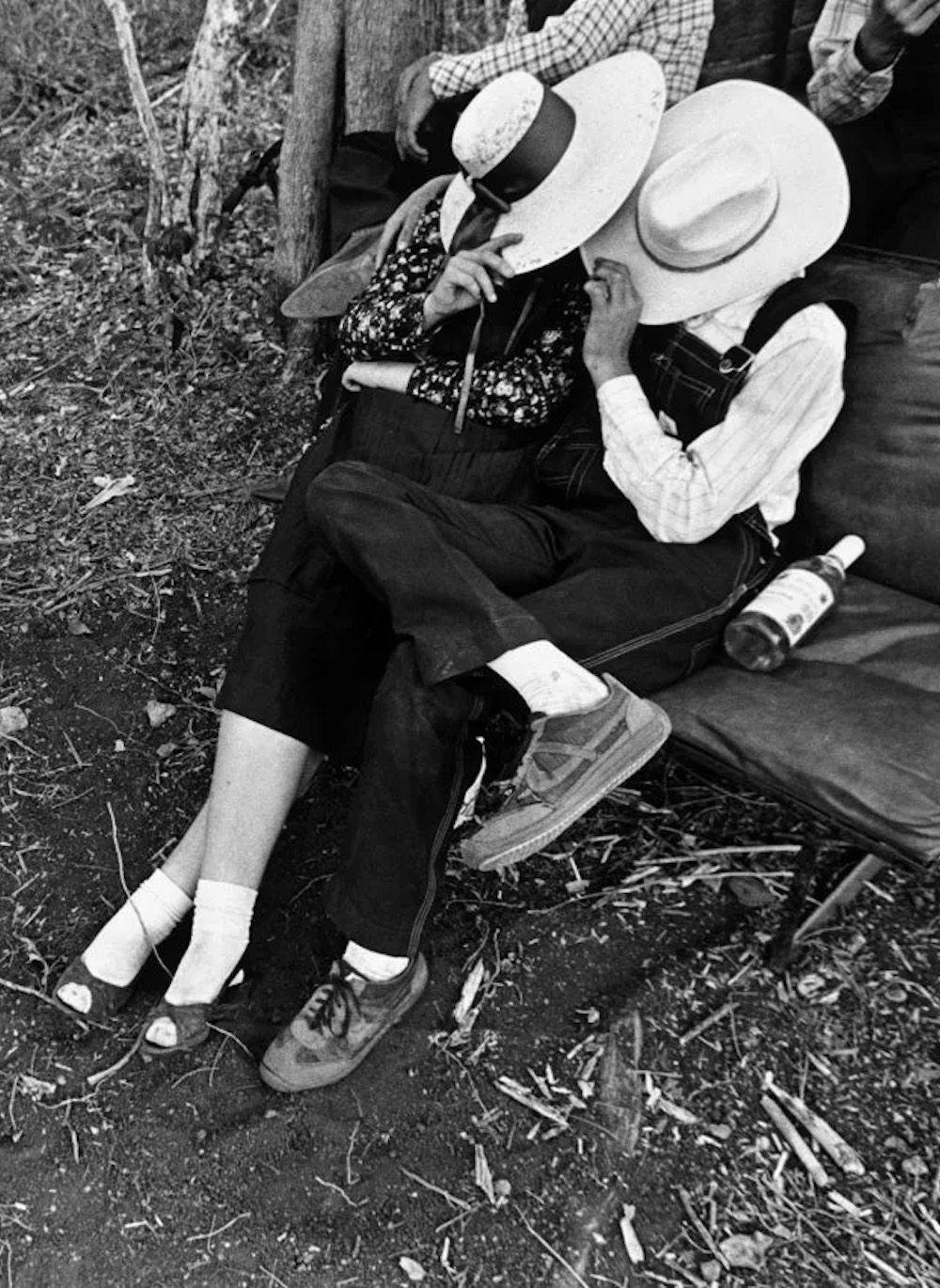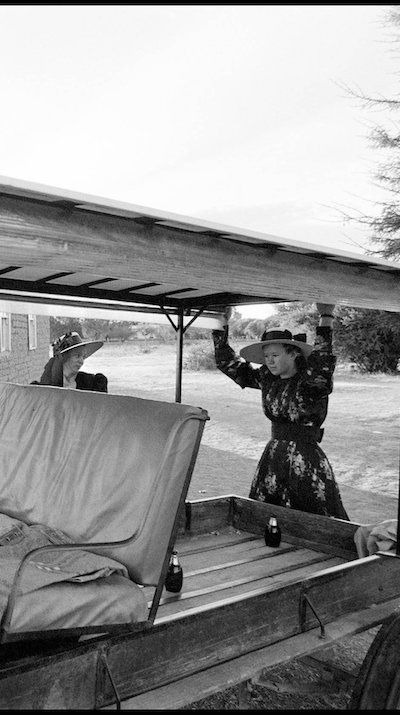
Fifty Shades of Amish: A Strange Genre of the Romance Novel
Tuke sucked in his breath and let it out slowly. “Okay, I’m just going to flat out ask you. What’s it take to get to first base with you, Nora? You’ve been deflecting my —”
“What do you consider first base?”
The wide-eyed expression on Nora’s face made Luke kick himself for asking such a crude question. Did she expect him to spell out every little detail? Or was she covering for not knowing what first base meant?
This is a conversation not between guileless teens but two grown adults, in Charlotte Hubbard’s Amish romance novel Harvest of Blessings. The next line is the giveaway, as Luke wonders to himself whether Nora missed a few lessons in romance after “being sent away at 16 to have a baby.”
As if sexual politics weren’t confusing enough, give them an Amish backdrop and they get elaborately more complicated. In Amish romance novels, there is no sex, but lots of babies; no nakedness, but layer upon layer of clothing is removed; and no physical contact between unmarried couples—unless perhaps God wills it through a tornado, or a house fire, or a buggy accident—and, well, it turns out that happens between attractive Amish singles quite a lot.
During an unsteady dismount from a buggy in Amish Redemption, a novel by Patricia Davids, the female protagonist, Mary, loses her balance but is whisked back to her feet by a prospective suitor, Joshua. “She would have fallen if he hadn’t caught her by the waist and pulled her against him.
gazed into her wide eyes as he slowly lowered her to the ground, reluctant to let her go.”
She clutched his shoulders to steady herself. He (Spoiler alert: A great deal of unsteadiness seems to always happen between couples around buggies.)
In a market overwhelmed with Fifty Shades of Grey knockoffs, it might come as a surprise to see books offering chaste titillation mass-produced in trade paperback for Wal-Mart (where both of those books are selling briskly). Yet the romance sections of bookstores are increasingly dominated by what publishers affectionately call “bonnet rippers.”
In this era of disposable, fast-food sex, the appeal of Amish romance is no mystery, says Wanda Brunstetter, one of the founding authors of the genre. “When people read my books, it takes them to a simpler way of life,” she says. “Hanging clothes on the line, cooking meals from scratch, turning off the television and mobile phones and just visiting.
We’ve lost that way of life. I think my readers are craving that. Also, the Amish set a precedent for us in that their relationships are based on family, church and community, not just the sexual part of things.”
Of course, there is a sexual part of things, but these books have a subtler way of conveying it than E.L. James. More is left to the imagination, and the kiss, robbed some time ago of its momentousness in popular culture, reclaims its allure. In Amish Redemption, for instance, a torrid kiss goes on for three pages, with several more pages committed to the couple who shared the kiss agonizing over it, with the suitor castigating himself for being “impulsive” and torturedly reading passages from the Bible afterward.
“For my readers, it is more refreshing to read between the lines… We all know what goes on.”
In Brunstetter’s Going Home, it takes 327 pages of canoodling over sumptuous desserts and prayer time before Noah finally asks his crush, Faith, if he can court her—at which point, he blurts out that he loves her. From there, Brunstetter moves swiftly to an epilogue where we see the couple two years later, married with a son, Isaiah. Faith tells Noah, “God has been good and blessed our marriage.” Says Brunstetter, “We can show that the couples are consummating their marriage without giving details. For my readers, it is more refreshing to read between the lines and not hear step by step what goes on. We all know what goes on.”


“The average family has eight children,” Lewis remarks. “And I know two families that have 22 children, all biological.”
At the same time, it can be rather jarring while browsing in a bookshop to see the shirtless-male-torso covers commingled with illustrations of pious Amish women in long dresses, hair tucked under kapp, alongside men in broadfall pants and suspenders. (In fact, the two side by side make both seem a lot dirtier.) But the erotica and Amish genres share much common ground: Both portray young ladies torn by deep desires, whose cheeks flush, blush and burn. Lip-biting by the women and whip-wielding by the men abound (except in Amish fiction only the geldings get harnessed and whipped). And similar to the Fifty Shades series, climactic moments are irritatingly punctuated by feminine exultations of “Oh my!”—only these are laced with dollops of Pennsylvania Dutch and High German.
Brunstetter and the other forerunner of Amish fiction, Beverly Lewis, have each sold more than 200,000 copies of their books worldwide in the past 12 months, according to Nielsen BookScan. Total combined books sold by both authors since they began publishing Amish romance in the late 1990s is closing in on the 30 million mark. Other regions generating sales include South America, India, Italy and New Zealand. The U.K. is the second-biggest market after the United States.
Brunstetter and Lewis, along with other Amish romance writers, frequent the New York Times and USA Today best-seller lists and have seen a handful of their books made into feature-length films, Hallmark Channel movies and even National Geographic documentaries. “Right now, I am working on my fourth film with director Michael Landon Jr. for the Hallmark Channel,” Lewis tells Newsweek. (Yep, he’s talking about the son of Little House on the Prairie’s Michael Landon of 1970s-’80s TV fame.)
While Amish fiction dates back to the turn of the last century (Barnes & Noble recently reprinted Helen R. Martin’s 1905 Sabina: A Story of the Amish), a smattering of Amish authors have entered the market over the past several years, with dozens of Amish titles hitting bookstores every month, says Melissa Parcel, who heads up the inspirational fiction section of RT Book Reviews (formerly Romantic Times), a Brooklyn, New York-based reviewer of fiction released worldwide every month. “They’re very big in the inspirational fiction market—I would say as much as half of what comes out in Christian fiction right now,” she says.
Jane Love, a buyer in the religious and inspirational book categories for Barnes & Noble in New York, agrees. She says the latest Amish novel out from Lewis, The Love Letters, released in March by Bethany House, part of Baker Publishing Group in Ada, Michigan, is selling “wonderfully,” even if the Amish market is thought to be nearly saturated.
“We keep asking, ‘Is this the last Amish book that’s going to sell well?'” Love says. “But readers just keep on buying them.” As of 2014, the inspiration/religious category generated an estimated $720 million in sales a year, according to the Romance Writers of America Association, making it the third most profitable genre after crime novels, which notched just above it, and erotica, which hit nearly $1.5 billion during the same period.
The bulk of the Amish romance audience is women over 40 who are not Amish but actually evangelical Christians. “These are readers who love romance but want a clean read they don’t have to hide from their kids,” says Shannon Marchese, a senior editor at evangelical publisher WaterBrook Multnomah in Colorado Springs, Colorado, a division of Penguin Random House.
The authors of Amish fiction freely admit that most of them are not Amish, either. “I can think of only one Amish writer I know of,” says Lewis, who made a point of living with Amish families to learn more about them. “She’s Old Order Amish, Linda Byler, and she has a bishop who’s given her permission to write Amish novels. She had an electric typewriter reconfigured to have batteries in it, which are allowed in Amish culture, so she can write.”
Cindy Woodsmall, who’s sold 1.5 million Amish romance novels since her first book came out, in 2006, says that while Christians don’t necessarily regard each other as the best standard-bearers for “God-minded” books, “they accept it as a given that the Amish have true accountability and morally upright beliefs.” (Like fans of Amish fiction, the authors tend to have Christian affiliations and pay homage to the Amish way of life.)
The Amish take a “literal view from the Bible,” Woodsmall says. “No premarital sex, no birth control even after marriage and no sex education at all, except maybe on your wedding night.” All of which makes for some unique narratives that would scarcely be believed in any other context (such as the aforementioned woman with a baby who somehow does not know the meaning of first base). “It almost goes back to your Victorian age of romance, where there are all these deep-seated passions that you have to hide, and yet you can still come up pregnant,” she says.
Despite the parallels with erotica, one of the great appeals of Amish romance is that there are very strict rules among the Amish that serve to heighten the drama. In a community that bans everything from sex and children out of wedlock to electronics and musical instruments, the characters in these books are fighting more than your usual amount of forbidden desires. “As my 21-year-old son always says, the more you repress something, the more you’re inviting it in,” Woodsmall says.
Mary Alice Yoder, a quick-witted Amish woman who lives in northern Indiana and reviews books for The Connection, a monthly periodical distributed to Amish and Mennonite households across the U.S. and Canada, says many Amish “won’t read fiction at all.” Estimating that only about 50 percent of the Amish she knows have read any Amish fiction, she tells Newsweek, “They are very choosy. If the cover looks like a mistake, we know the author wasn’t aware of what he/she was writing about and it’s a bunch of made-up lies.”
The upside for the Amish to being in the spotlight? “It might give someone a glimpse of how life can be enjoyed without TV, cars, etc., and make them choose a more simple life,” Yoder observes. “If the book is about godly living, it leaves a good example. It is much better reading than lust-filled romance books.”
One of the biggest plaints when it comes to novels about “the Plain”: too many similarities in storylines, says Parcel. “We’ve kind of played out the ‘Are you going to leave the Amish community or not?’ and the ‘Are you going to keep your secret or not?’ narratives.” Hence, the rise of the “bonnet bloodsuckers” over the past two years, such as Amish Vampires in Space and The Amish Bloodsuckers Trilogy. Though such titles may sound out-there, she says, they are a welcome departure from the typical Amish fare, which “most of my reviewers are getting burned out on.”
Many conceits are also overplayed (again, usually for purposes of facilitating forbidden romance): inappropriate contact between singles around barns, buggies and skittish horses; fantasies entertained by couples at church; and (my favorite) the awkward oral fixation at family mealtime, such as in Harvest of Blessings, where “he found himself watching the way she bit into her burger and licked the melting cheese from the bottom of the bun. He wished he could be her napkin when she wiped her mouth.”
So what is the archetypal Amish Fabio? “You’re going to giggle at this, but if you talk to Amish girls, the No. 1 thing they look for in a mate is that he’s hardworking,” says Lewis. “They talk about a healthy, strong, robust man, not necessarily good-looking, because they’re going to have lots of babies, one after the other—that is their role. Because they don’t proselytize, that is how they grow the church.”
With the Amish community swelling to 300,000 people and settlements expanding to nearly every state in America, the popularity of the Amish romance novel appears to be waxing alongside the community’s evident virility.
“The average family has eight children,” Lewis remarks. “And I know two families that have 22 children, all biological.”
That’s a lot of Amish romance.
Related Articles
Related
Donald Trump, West Palm Beach and the Rise of the New Wall Street
Donald Trump, West Palm Beach and the Rise of the New Wall Street Leah McGrath Goodman Newsweek March 21, 2017he night I flew into West Palm Beach, a string of deadly tornadoes ripped across Florida. High winds pounded surf against jagged coastline...
Wall Street Firm Founded by Trump’s Army Secretary Nominee Violated Trading Rules for Years
Virtu Financial, the giant Wall Street high-frequency trading firm run by President-elect Donald Trump’s nominee for secretary of the Army, Vincent Viola, has a record of violating the rules of the U.S. Securities Exchange Act, the Nasdaq Stock Market, the New York Stock Exchange and other exchanges that extends back nearly as long as the firm has been in business, according to U.S. market regulatory filings reviewed by Newsweek.
9/11’s Second Wave: Cancer and Other Diseases Linked to the 2001 Attacks Are Surging
As many as 400,000 people are estimated to be affected by diseases, such as cancers, and mental illnesses linked to September 11. This figure includes those who lived and worked within a mile and a half of Ground Zero in Manhattan and Brooklyn, the vast majority of whom still don’t know they’re at risk. Mark Farfel, director of the World Trade Center Health Registry, which tracks the health of more than 71,000 rescue workers and survivors, says, “Many people don’t connect the symptoms they have today to September 11.”



